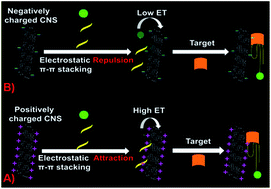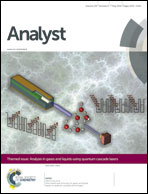Improving the fluorescence detection limit with positively charged carbon nanostructures as a low background signal platform†
Abstract
We have demonstrated a new strategy to improve the fluorescence detection limit by enhancing the energy transfer efficiency between carbon structures and fluorescent dyes using polyimidazolium-functionalized carbon nanostructures as a low background signal platform. Based on this, a highly sensitive method for thrombin was proposed with a detection limit as low as 2.79 pM without any amplification.


 Please wait while we load your content...
Please wait while we load your content...